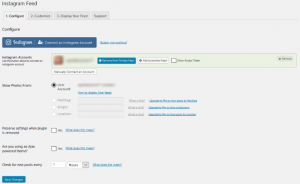As a web optimization guru, you’re well aware of the fact that consumers are now accessing the Internet via their smartphones more than desktop. You know we live in a mobile-first world and, like many digital marketing teams, you’re most likely focusing more and more of your marketing budget on mobile. This drives traffic to your mobile website and it’s up to you to understand how to move those prospects through the sales funnel. Whether they make a purchase online or complete a web form, you must optimize your website to drive conversions.
You believe you’re doing everything you can to ensure those mobile web leads convert. From overhauling your website with a responsive design to using less copy, ensuring clear navigation, and conducting A/B tests. Yet for some reason, your conversion rates remain stagnant or see little improvement. And so you rack your brain trying to figure out how to improve CPA.
You might think you’re in a predicament. You’re responsible for optimizing your website to drive online conversions after all. But here’s the one thing you may not realize: your website is actually converting better than you think and there are three steps you can take to make it even better.
Step 1: Change Your Definition of Conversions
To truly optimize your website to drive conversions, you must first recognize that conversions can occur online and offline. You may believe consumers only convert online, but there’s a new reality: consumers can no longer be pigeonholed into one path to purchase. Consumers are calling businesses by the billions from digital marketing thanks to the rising adoption of smartphones. And when it comes to call volume generated from landing pages like the ones web optimization teams manage, they’re expected to grow from 27 billion to just over 40 billion between 2016 and 2019.
It’s much more convenient and natural to call and speak to a real human being rather than hunt for answers around a mobile website on a tiny screen. It’s important to account for call conversions because phone calls play a crucial role in the customer journey. Especially if they’re being driven to your website from mobile marketing.
Step 2: Understand the Value of a Phone Call
Now that you know mobile consumers are also choosing to connect offline, it’s time to grasp the value of a phone call. Did you know phone calls are a more promising lead? They tend to convert 10x-15x faster than web leads. Someone that opts to talk to your business is a hot lead and much more likely to buy from your business than someone who chooses to fill out a form. Consumers that call want answers before they commit to a purchase. Cloud.IQ reports that consumers are actually 70% more likely to back out of a sale if they cannot speak with someone over the phone, which is why including a clear phone number with a strong “call now” CTA on every page is very important for driving more conversions.
If you’re already doing this and not tracking call conversions, then your website is most likely driving more conversions than you realize. To fully optimize your website to drive conversions, you’ll need to know whether your landing pages are driving quality calls that convert.
Step 3: Attribute Conversions to the Correct Landing Pages
Mobile marketing is driving smartphone users to your mobile optimized website. If you could determine which landing pages drive good calls, bad calls, and no calls from these smartphone users then you’d be able to use that knowledge to optimize your website to drive even more conversions – both online and offline. Your optimization decisions will no longer be limited to just online conversions, helping you improve your digital teams return on ad spend and ROI. By closing the loop on the types of conversions generated from your mobile website, you can make better data-driven decisions. You’ll also have more data to prove the value of your website and each landing page.
At the end of the day, your website needs to create a seamless user experience that results in a conversion. By only focusing on online conversions, you’re not getting the full picture of your website performance. Your website is probably doing better than you think it is, but the only way you’ll know for sure is if you integrate call data into your existing reporting tools, like Google Analytics. This way, you can see call conversions alongside clicks during your website analysis.
To learn more about our seamless call attribution integration and how call attribution can help improve your website conversion rate, simply request a personalized demo.
Business & Finance Articles on Business 2 Community(52)







